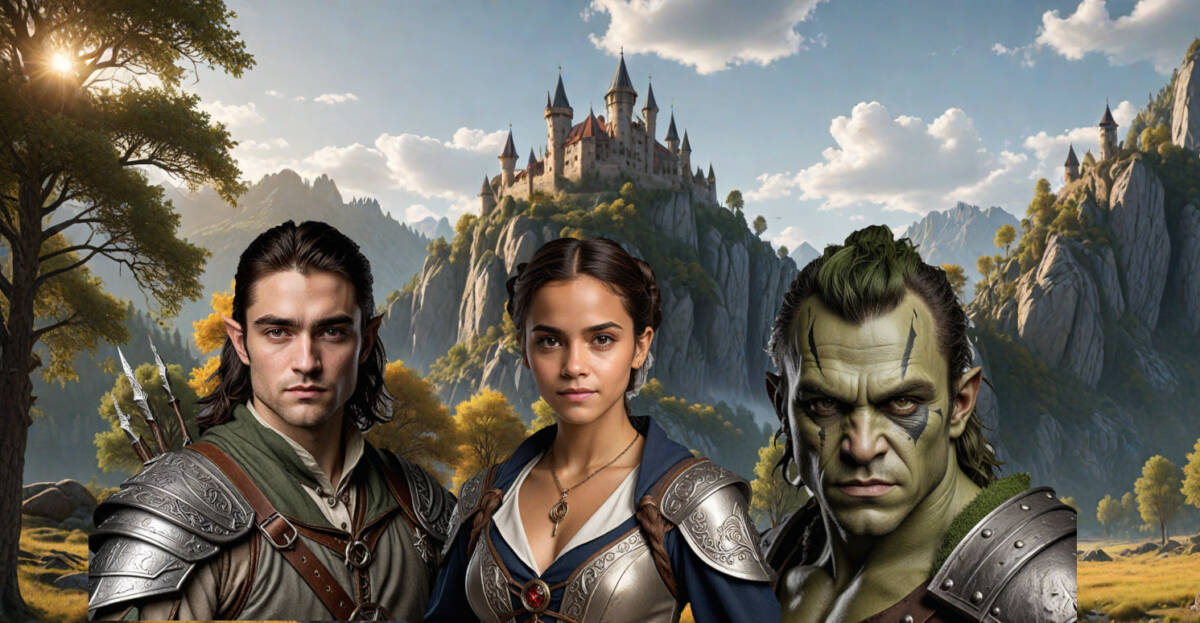As we hit the 50th anniversary of Dungeons & Dragons, we need to address the bugbear in the room:
Orcs, elves, and humans (at least) are all the same species. Canonically. {1}
Why? One of the primary (if not the primary) indications of being a different species is being unable to interbreed and produce viable offspring.
Corgis and malamutes are the same species. Humans and chimpanzees are not, even though we arguably look more similar than a corgi to a malamute.
While humans have used hybridization to create new species (such as lemons), hybridization among vertebrates is VERY rare, first being observed in vertebrates only in 2022.
Sure, there’s technology (or magic) that can create hybrids. We can canonically look at the owlbear for that. Originally explained the result of a magical experiment by a mad wizard, owlbears are able to breed among themselves.
But when we look at the (official, 5e) descriptions of other races, the interbreeding is… well, very matter-of-fact:
"Whether united under the leadership of a mighty warlock or having fought to a standstill after years of conflict, orc and human communities, sometimes form alliances. When these alliances are sealed by marriages, half-orcs are born."
"Walking in two worlds but truly belonging to neither, half-elves combine what some say are the best qualities of their elf and human parents."
Therefore, the existence of this non-magically assisted canonical interbreeding either means that humans, orcs, and elves (at least) are the same species, just widely variant branches. This also implies (through omission) that these children are not themselves sterile, unlike, say, a mule.
You probably see where this is going: there are going to be people with different amounts of human, elvish, and orcish heritage. Perhaps there was a distant orc grandparent. An elvish ancestor four generations back on your mother’s side. A distant human ancestor in the elvish family tree. {2}
In my D&D sessions, I leave the game mechanics alone and leave the rules as they stand. I like cinematic and "rule-of-cool" play, and a lot of extra mechanics like that tend to get in my way.
Socially, however, it is something that comes up… at least in terms of providing variety and interesting NPCs for the players to interact with. Additionally, it explicitly shifts many of the stereotypes and tropes used in fantasy roleplaying to the social and cultural realm rather than biology. {3}
In many ways, making this shift doesn’t change a lot. Humans are definitely all the same species. Yet our cultural differences (including claiming that varying levels of melanin somehow makes people inherently different) have led to plenty of conflict.
No changes are really needed to most modules or adventures; you’re changing the motivation from a race-based one to a cultural one.
As a nice side effect, this also helps reduce some murderhobo tendencies. No longer can your players safely assume that an NPC’s appearance automatically has anything to do with their temperament or intentions.
I’m currently looking for players for a Monday or Thursday night campaign, and often run one-shots. You can sign up at StartPlaying, or read more at the Black Talons website.
{1} At least through 5th edition; I’ve not seen the new one yet.
{2} And so on.
{3} What about elves having a lifespan of "yes," and the perspective changes that inevitably brings? The long lifespan of elves is a recessive trait, and does not get passed to any offspring whose parents do not BOTH have that particular "elvish" trait.
